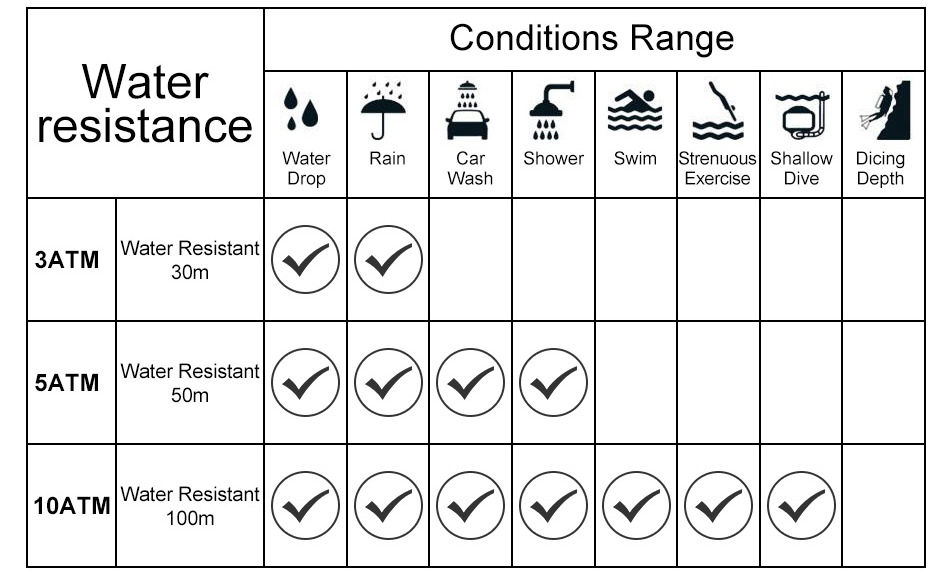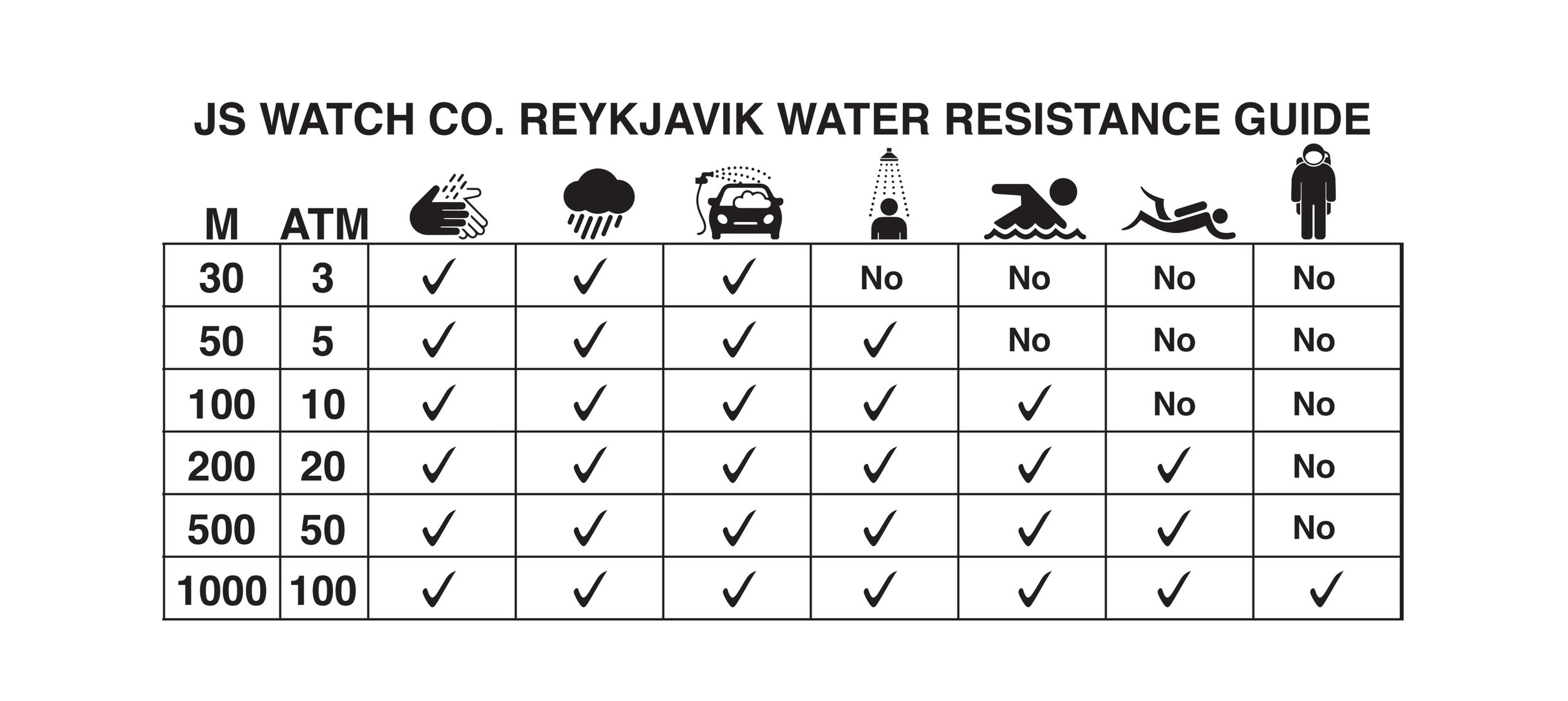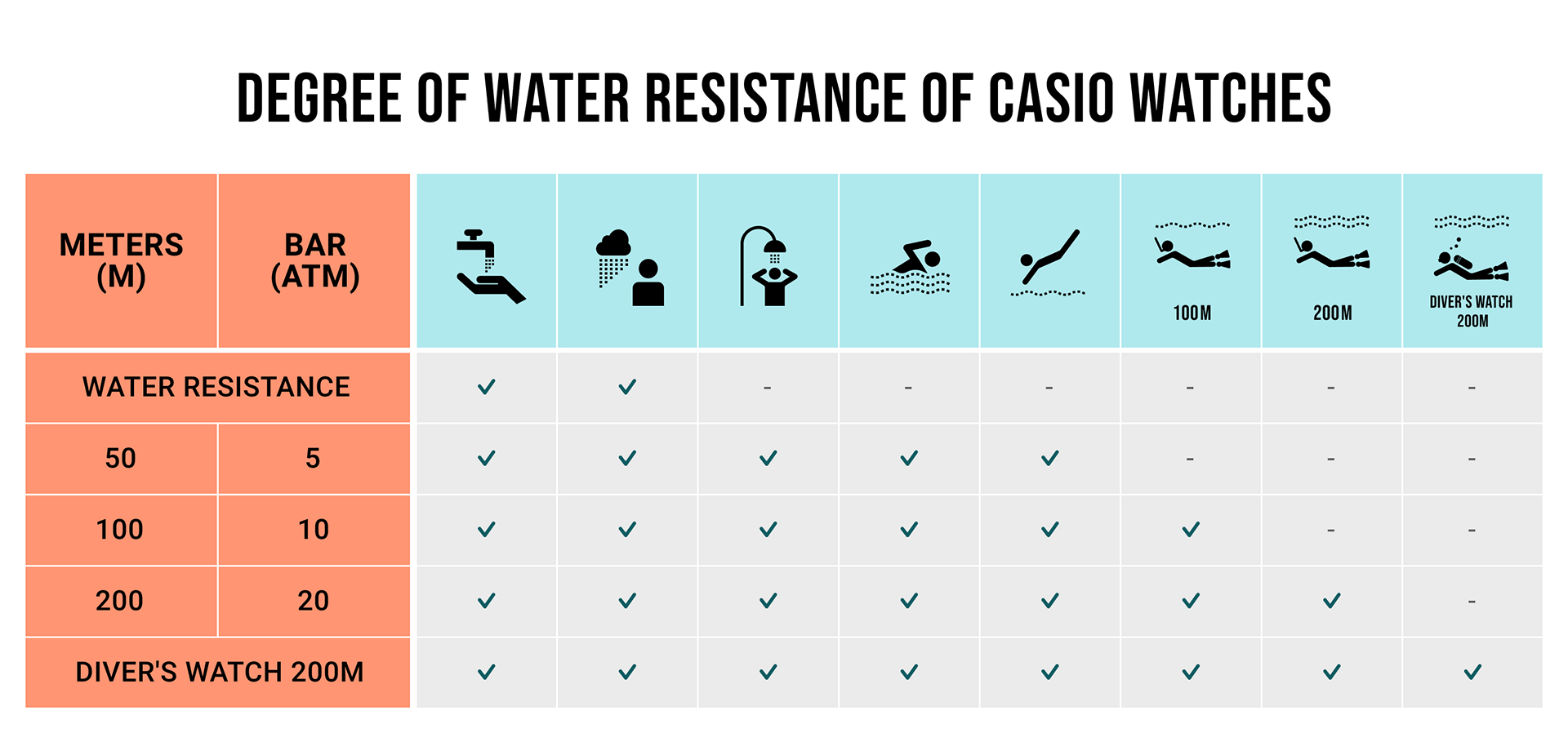What Is ATM Water Resistance: A Comprehensive Guide To Understanding Its Meaning And Importance
When shopping for watches, you may often come across the term "ATM water resistance." But what exactly does it mean, and why is it important? Understanding ATM water resistance can help you make informed decisions when purchasing a watch that suits your lifestyle and activities. Whether you're an avid swimmer or someone who enjoys outdoor adventures, knowing the details about ATM water resistance can save you from potential damage to your prized timepiece.
Watches are more than just accessories; they're functional tools that require proper care and maintenance. One crucial aspect of watch care is understanding the level of water resistance it offers. In this article, we will delve into the concept of ATM water resistance, explore its significance, and provide practical tips to ensure your watch remains in excellent condition.
Whether you're a watch enthusiast or simply looking for a reliable timepiece, this guide will equip you with the knowledge you need to make the best choice. Let's dive in and uncover the secrets behind ATM water resistance!
Read also:Vanilla Gift Balance Checker A Comprehensive Guide To Managing Your Gift Card
Table of Contents
- What is ATM Water Resistance?
- Understanding ATM Ratings
- How ATM Water Resistance Works
- Common Misconceptions About ATM Water Resistance
- Choosing the Right ATM Rating for Your Needs
- Maintenance Tips for Water-Resistant Watches
- Factors Affecting Water Resistance
- ATM Water Resistance vs Waterproof
- Frequently Asked Questions
- Conclusion
What is ATM Water Resistance?
ATM water resistance refers to the ability of a watch to withstand water pressure at specific depths. The term "ATM" stands for "atmospheres," which is a unit of measurement used to indicate the level of water resistance. Each ATM rating corresponds to a certain depth in meters, making it easier for consumers to understand how much water pressure a watch can handle.
History of ATM Water Resistance
The concept of water-resistant watches dates back to the early 20th century when watch manufacturers began developing timepieces that could withstand moisture and water exposure. Over the years, advancements in technology have led to more sophisticated designs and materials, allowing watches to achieve higher levels of water resistance.
Today, most watches come with an ATM rating, providing consumers with a clear indication of their water resistance capabilities. However, it's important to note that ATM ratings do not necessarily mean the watch is completely waterproof.
Understanding ATM Ratings
To fully grasp the concept of ATM water resistance, it's essential to understand the different ATM ratings and what they signify. Below is a breakdown of common ATM ratings and their corresponding depths:
- 3 ATM: Suitable for everyday use, including light rain and handwashing.
- 5 ATM: Ideal for swimming and showering.
- 10 ATM: Designed for snorkeling and water sports.
- 20 ATM: Perfect for scuba diving and deep-water activities.
Knowing the ATM rating of your watch can help you determine its suitability for various activities and environments.
How ATM Water Resistance Works
Water resistance in watches is achieved through a combination of design features and materials. Manufacturers use gaskets, seals, and screw-down crowns to create a tight seal that prevents water from entering the watch. Additionally, materials such as stainless steel, titanium, and sapphire crystal contribute to the overall durability and water resistance of the timepiece.
Read also:Chumlee Net Worth A Deep Dive Into His Wealth And Career
Key Components of Water Resistance
Several components play a crucial role in ensuring a watch's water resistance:
- Gaskets: Rubber or silicone rings that seal the watch case, crown, and crystal.
- Screw-Down Crown: A crown that screws into the watch case, providing an additional layer of protection.
- Caseback: A secure caseback that prevents water from entering the watch mechanism.
Regular maintenance and inspection of these components are essential to maintaining the water resistance of your watch.
Common Misconceptions About ATM Water Resistance
Despite the widespread use of ATM ratings, many misconceptions surround the concept of water resistance. Below are some common myths and the truths behind them:
- Myth: A water-resistant watch is completely waterproof.
Truth: No watch is 100% waterproof. Water resistance refers to the ability to withstand water pressure at specific depths. - Myth: Once a watch is water-resistant, it remains so forever.
Truth: Water resistance can degrade over time due to wear and tear, requiring regular maintenance. - Myth: You can wear any water-resistant watch while swimming.
Truth: Only watches with an ATM rating of 5 or higher are suitable for swimming.
Understanding these misconceptions can help you make informed decisions about your watch's usage and care.
Choosing the Right ATM Rating for Your Needs
Selecting the appropriate ATM rating depends on your lifestyle and activities. Consider the following factors when choosing a watch:
- Your daily routine: If you frequently encounter water, opt for a watch with a higher ATM rating.
- Your hobbies: Engaging in water sports or diving requires a watch with a higher level of water resistance.
- Your budget: Watches with higher ATM ratings often come with advanced features and materials, which may affect the price.
By assessing your needs, you can find a watch that balances functionality, style, and affordability.
Maintenance Tips for Water-Resistant Watches
To ensure your watch remains water-resistant, follow these maintenance tips:
- Regularly check the gaskets and seals for wear and tear.
- Have your watch serviced by a professional every 1-2 years.
- Avoid exposing your watch to extreme temperatures, as it can affect the seals.
- Do not wear your watch in hot showers or saunas, as steam can penetrate the seals.
Proper maintenance not only prolongs the life of your watch but also ensures its water resistance remains intact.
Factors Affecting Water Resistance
Several factors can impact the water resistance of a watch, including:
- Age and wear: Over time, seals and gaskets can degrade, reducing water resistance.
- Temperature changes: Extreme temperatures can cause seals to expand or contract, compromising their effectiveness.
- Pressure changes: Sudden changes in water pressure can affect the watch's water resistance.
Being aware of these factors can help you take preventive measures to protect your watch.
ATM Water Resistance vs Waterproof
While the terms "water-resistant" and "waterproof" are often used interchangeably, they have distinct meanings. Water-resistant watches are designed to withstand water exposure up to a certain depth, as indicated by their ATM rating. On the other hand, no watch is truly waterproof, as all watches have limitations in terms of water resistance.
It's important to understand the difference between these terms to avoid misunderstandings and ensure proper care of your watch.
Frequently Asked Questions
Can I wear a 3 ATM watch while swimming?
No, a 3 ATM watch is only suitable for light exposure to water, such as handwashing or light rain. For swimming, a watch with a minimum of 5 ATM is recommended.
How often should I have my watch checked for water resistance?
It's advisable to have your watch checked and serviced by a professional every 1-2 years to ensure its water resistance remains intact.
Can I wear a water-resistant watch in the shower?
While some water-resistant watches can withstand water exposure during showers, it's best to avoid exposing your watch to steam, as it can damage the seals.
Conclusion
In conclusion, understanding ATM water resistance is crucial for anyone who owns or plans to purchase a watch. By familiarizing yourself with ATM ratings, common misconceptions, and maintenance tips, you can ensure your watch remains in optimal condition for years to come.
We encourage you to share your thoughts and experiences with ATM water resistance in the comments below. Additionally, feel free to explore our other articles for more insights into watches and accessories. Thank you for reading, and happy watch shopping!
Article Recommendations


